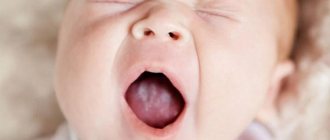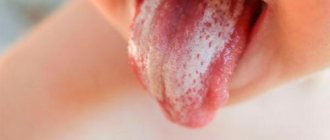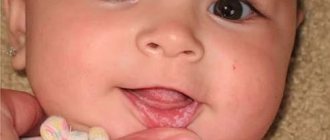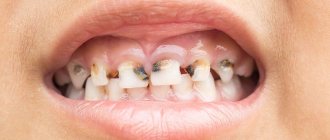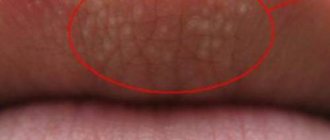Both adults and children are susceptible to fungal and infectious diseases. One of the most common ailments that mainly affects the female body is candidiasis (thrush). This disease is so common that it is diagnosed in almost every adult woman. Infantile thrush is no less common.
The nature of the disease and its causative agent are the same in both adults and children. The candida fungus (Candida albicans), which causes thrush, is constantly present in the human body (on the mucous membranes, genitals and occasionally internal organs), being part of the microflora, without causing harm and without showing any symptoms. Therefore, the disease is provoked not so much by the fungus itself, but by the state of the body and external factors that contribute to the growth of the fungus and the development of infection.
Children's vulvovaginal candidiasis most often affects adolescents (mainly girls) and newborns of both sexes.
There are two forms of the disease:
- a form with pronounced symptoms according to the standard clinical picture;
- asymptomatic form, which is detected only as a result of laboratory tests.
There are also such types of thrush in children (vulvar candidiasis in girls), as oral candidiasis (develops in the mouth of newborns) and genital candidiasis (mainly in preschoolers and adolescents). In any case, the child must be shown to a specialist, since the infection indicates a decrease in immunity, which can lead to even more complex and unpleasant consequences.
Getting to know the pathogen
Meet Candida. This is the name of the family of yeast fungi that live in the natural human microflora. Along with this, representatives of Candida feel comfortable in the amniotic fluid, placenta, and umbilical cord. It’s no wonder that photos of thrush in infants are so common.
Ways of infection with candidiasis in children
Infection of newborns occurs in utero, during childbirth or after birth. Candida contamination of healthy newborns occurs from the first day of stay in the maternity hospital.
- Cases of intrauterine infection with candida have been described, which were found in the placenta, amniotic fluid and umbilical cord membranes, as well as in meconium and mucus of the newborn immediately after birth. A positive PCR reaction was obtained when examining the placenta, amniotic fluid, arterial and venous blood of the fetal umbilical cord.
- Infection (primary colonization) most often occurs when a child passes through the birth canal of a mother suffering from vaginal candidiasis.
- After birth, infants become infected through nutritional and contact routes through the hands of the mother and medical staff, during care, household items, bottles, pacifiers, toys, breastfeeding foods through nipples affected by candida, etc. Candida remains on the skin of the hands for up to 2 days.
- Thrush in infants can appear when yeast-like fungi are activated in the gastrointestinal tract (candidiasis) of the newborn itself. Damage to the mucous membranes and skin in such cases occurs on days 6–11 of life.
- Thrush in the mouth in children often appears as a result of the use of antibiotics.
- In early childhood and adolescence, as well as during puberty, the disease develops due to the activation of candida, which lives in the body as a saprophytic flora.
Rice. 2. Thrush in the mouth of a baby.
Candidate carriers
Fungi of the genus Candida are opportunistic flora. In small quantities they live on the mucous membranes and skin of humans and do not cause disease if the immune system is functioning normally. Candida is isolated from the oral cavity of healthy individuals in 20 - 60% of cases, in 9 - 16% - from bronchial secretions, in 10 - 17% of women, pathogens are isolated from the vagina, in 25 - 33% - from the vagina of pregnant women, in 40 - 80% of cases of pathogens are found in feces. Candidate carriage is detected in 45% of medical personnel.
Adults with candidiasis and candidiasis carriers are the main sources of the disease in children.
Risk factors for the development of candidiasis in children
Risk factors for developing the disease include:
- “Immature” children born for their age (morphofunctional immaturity).
- Primary and secondary immunodeficiency.
- Feeding infants formulas rich in sugar.
- Treatment of children with antibiotics, glucocorticoids and cytostatics.
- Long-term stay of children in inpatient departments, intensive care units or intensive care units.
- The child has metabolic disorders (diabetes mellitus, fermentopathy, etc.).
The risk group for the development of candidiasis includes the following categories of children:
- born from mothers with candidiasis,
- premature,
- often and for a long time suffering from acute respiratory infections,
- children with intrauterine bacterial and viral infections, with infections occurring against the background of secondary immunodeficiency (herpetic, cytomegalovirus, etc.).
- children with oncological and hematopathology, HIV-infected,
- with diseases of the gastrointestinal tract occurring against the background of dysbacteriosis,
- somatically weakened (children with anemia and malnutrition),
- patients with allergies and allergic dermatoses.
Rice. 3. Candidal stomatitis in infants.
Reasons for the activation of Candida fungi
A number of factors can provoke excessive bacterial activity. Failure to comply with hygiene rules by the mother, a dry microclimate in the child’s room, and the presence of candidiasis in the mother are just some of the reasons. Thrush in a baby's mouth, as in the photo, can also appear due to the use of poorly sterilized nipples.
Candidiasis in children: consequences
Like any sexual disease, candidiasis in a girl is fraught with disruptions to the reproductive system, which begins during intrauterine development. Before puberty, girls have very delicate genital mucosa, so even a mild form of infection can lead to fusion (synechia) of the labia and vagina.
Thus, parents should carefully monitor the general health of the girl and her external genitalia, and later, when the child is able to take care of herself, explain how to take care of herself.
Thrush in children: symptoms and types
Symptoms depend on the form and type of candidiasis:
- candidiasis (without symptoms and harm to the health of the carrier);
- acute and chronic forms;
- recurrent and persistent (complicated) forms;
- secondary candidiasis, which develops with non-fungal lesions of the genital organs.
Vulvovaginal candidiasis (thrush, vulvar candidiasis) in children and adolescents is manifested by the following symptoms:
- itching and burning in the perineum (constant or worsening in warmth, in a hot bath, when walking and wearing the wrong underwear (too tight, synthetic, etc.);
- pain and burning when urinating.
As a result of constantly appearing signs, the child may develop a fear of taking a bath or urinating, as well as before sexual intercourse (in sexually active adolescents), up to severe nervous disorders.
In the acute form of thrush in children, the following occurs:
- hyperemia and swelling of the external genitalia and vagina;
- discharge (cheesy or creamy) with a sharp sour odor;
- in some cases, a grayish-whitish coating is observed on the walls of the vagina.
In the chronic form of thrush in children, the following occurs:
- less pronounced symptoms (itching, burning, redness, etc.), which may intensify before menstruation (in menstruating girls);
- less intense swelling and mild or completely absent plaque;
- changes in the skin of the labia and around the vagina.
If you notice symptoms of thrush in your child, you should urgently consult a doctor to undergo a course of treatment and prevent it from becoming chronic or recurrent.
How to prevent infection?
Expectant parents, first of all, the expectant mother, need to know that in order to reduce the risk of infecting a child with candidiasis to zero, it is necessary to follow all the doctor’s instructions. Just in case, watch the video on how to clean thrush from a newborn’s tongue.
WE RECOMMEND YOU TO WATCH:
Classification of the disease
There are several forms of candidiasis in children:
- Candidomycosis of the skin and its appendages.
- Candidiasis of visible mucous membranes (oral cavity, pharynx, genital organs).
- Systemic candidiasis affecting the gastrointestinal tract (esophagus, stomach, intestines, liver), genitourinary, respiratory, cardiovascular, skeletal and nervous systems.
- Allergic manifestations (candidal allergic dermatoses).
Rice. 4. Thrush in the mouth of infants develops in 5 - 10% of cases.
Treatment of fungal infections
Thrush is treated with antifungal agents that are applied to the skin or mucous membranes. Systemic therapy is also prescribed. If you treat only the symptoms, a relapse will soon occur. The cause of the disease should be combated by strengthening the body’s protective functions.
Treatment is carried out on an outpatient basis. Hospitalization is necessary only in case of severe disease and in the presence of concomitant pathologies.
Treatment of fungal infections in children has the following approach:
- prescribing monotherapy or a combination of systemic and external antimycotic agents;
- the use of immunostimulants, glucocorticoids and antihistamines.
To increase the effectiveness of drug therapy, multivitamin complexes and physiotherapeutic procedures (DMV, therapy, darsonvalization, magnetic therapy, medicinal electrophoresis) are prescribed. Treatment should be carried out 2-3 times a day. The hair is shaved and the crusts are carefully removed.
When localized on the feet and hands, it is recommended to use special pastes, creams and ointments based on clotrimazole, neftifine or terbinafine. If a bacterial infection occurs, it becomes necessary to use antibiotics. For protracted and severe fungus of the nails, face and body skin, and hair in a child, antimycotic drugs containing fluconazole, itraconazole or griseofulvin are indicated.
For onychomycosis, it is necessary to use the drug until the nail grows completely. If drug treatment is ineffective, then surgical removal of the nail plates is performed.
To permanently defeat an infectious disease, you need to use the right medications and adhere to a certain diet. Self-medication in this case can lead to the development of serious complications.
Foods that should be excluded from the diet:
- Sugar, in any variety - honey, cane sugar, dextrose, fruit, malt and beet sugar, maple syrup, etc.
- Refined carbohydrates - white bread, buns, cakes or cookies, light noodles, white rice, etc.
- Products containing yeast.
When treating fungal infections in children, it is recommended to keep the affected area dry by frequently changing underwear or diapers. After showering and bathing, it is advisable to pat your skin well with a soft terry towel.
Candidiasis of the mucous membranes of the genital organs
Damage to the mucous membranes of the genital organs by candida in children is the second most common after oral thrush. The disease in girls occurs as vulvitis and vulvovaginitis, in some cases together with urethritis, in boys - as balanitis, balaposthitis, in some cases together with urethritis. Candidiasis is characterized by swelling and hyperemia of the tissues; grayish-white filmy deposits or a curd-like layer appear on the mucous membranes. Sometimes children are bothered by itching. When the urethra is damaged, pain occurs when urinating.
The main causes of damage to the mucous membranes of the genital organs in children are congenital and acquired immunodeficiency conditions, infectious diseases, endocrinopathies, intoxication and disruption of the microbial landscape of the mucous membranes (dysbiosis). The disease often develops as a result of long-term use of antibiotics. A risk factor is the weakening of parents’ attention to the child’s intimate hygiene, as well as visiting kindergartens, when as a result of multiple contacts and frequent acute respiratory infections, children’s immunity decreases.
The diagnosis is established on the basis of the clinical picture of the disease and the detection of yeast-like fungi of the genus Candida during direct microscopy of the native preparation.
During treatment, the antifungal drug Pimafucin in the form of a cream is used topically once a day until the symptoms of the disease disappear. For common forms of candidiasis, antifungal drugs are used orally (Ketoconazole or Flucanazole) and topically at the same time.



